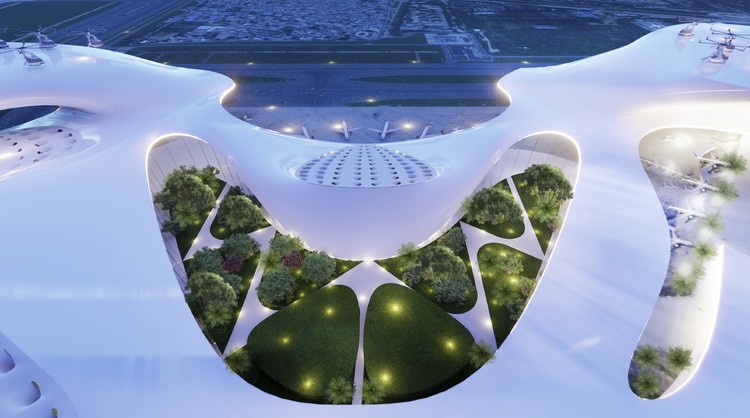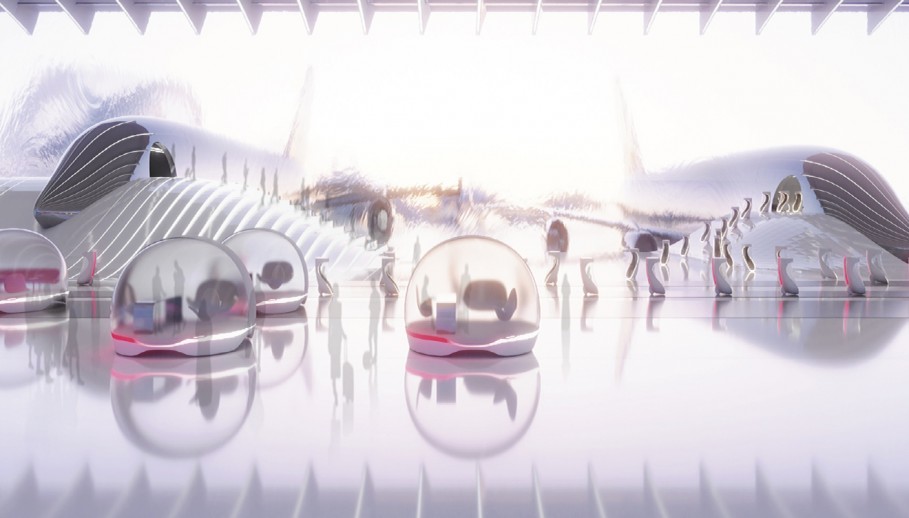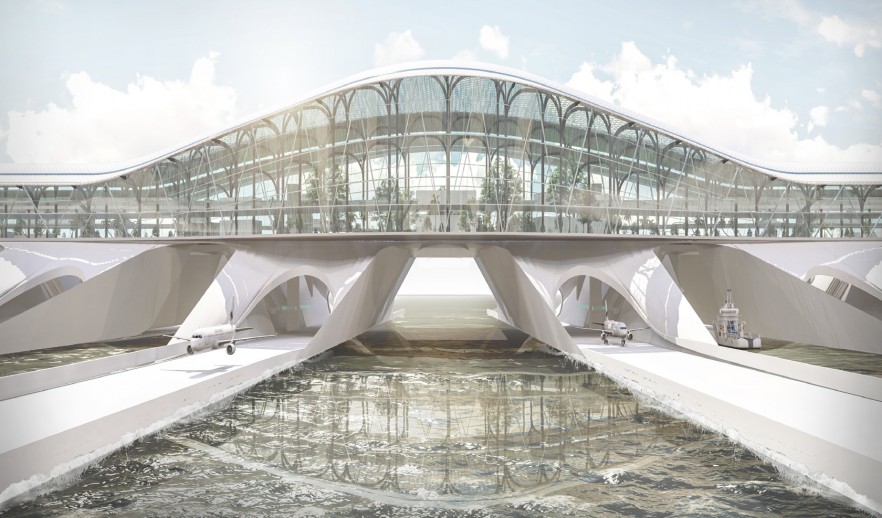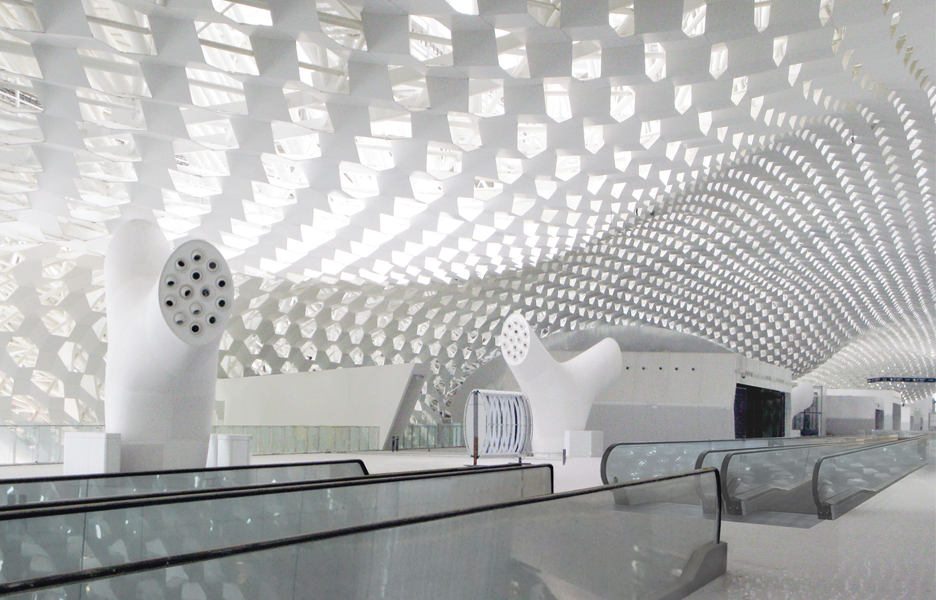
Airport of the Future 2020 winners announced
Airport of the Future 2020 winners announced
Share
Fentress Architects has announced the winners of the 2020 Fentress Global Challenge which asked architecture students to envision airport mobility in the year 2100.
The Fentress Global Challenge is an annual international student design competition launched in 2011 by US-based Fentress Architects to encourage innovative design in public architecture.
The 2020 competition asked participants to improve the airport terminal building, addressing key factors such as futuristic transportation technologies, mitigation of COVID-19, zero-emission travel, security, project feasibility, and passenger experience.

The winning concept, designed by Nikhil Bang and Kaushal Tatiya from the Southern California Institute of Architecture (SCI-Arc), transforms Indira Gandhi International Airport into a forward-thinking, sustainable multimodal hub that mitigates the environmental impacts of air travel.
The design, dubbed ‘The Green Gateway’ proposes a future where airports are more than buildings; they provide a seamless connection to the cultural context of the site, from their planning to their form and materiality.

According to second-place winner Dušan Sekulic—a student at the University of Ljubljana, Slovenia—airports in 2100 will function through fully autonomous pods, driving chairs, AI-powered navigation, and vertical take-off and landing (VTOL) aircraft will be key ingredients to designing the next-gen airport experience.
The concept proposes reimagining Hartsfield-Jackson Atlanta International Airport (ATL)—the busiest airport in the world—as a drive-in airport where travelers’ individual pods and driving chairs bring them directly to the aircraft.

This third-place winner responded to an ever-important reality: how airport design can prepare airports located in high-density seaside cities to adapt to the effects of climate change. Floating Aero City, designed by Yuanxiang Chan, Chaofan Zhang, and Zhuangzhuang King from Beijing Jiaotong University, provides a highly visionary approach to sustainable design.
Located in Hong Kong, the airport responds to the site’s subtropical climate conditions and high-density issues. Floating on Hong Kong’s ocean, the airport’s three-dimensional, moveable platform reduces the impact on the natural terrain while increasing available land.

The Vertebrae, designed by Yi Yang Chai and Sharon Cho from the University of Malaya, won the People’s Choice Award with more than 6,200 public votes. The biophilic design harmonizes the built environment with nature to create a “garden city”—the future airport archetype that forms a contextual representation of its culture.
Located in Singapore, the concept infuses a biophilic and sustainable approach into every element of the design to renvision the airport as a model of sustainability while amplifying the country’s national identity.
Several themes emerged across the shortlisted and winning submissions. The current pandemic inspired a wide range of ideas on how airport design might help mitigate the spread of infectious diseases, which may be more prevalent in 2100.
Fully touchless airports as well as terminals that function as “healing hubs” were among the concepts that sought to create health-centric, comfortable, and efficient travel experiences.
See the full list of shortlisted projects for the Airport of the Future 2020 competition.
C40 Cities recently launched the Students Reinventing Cities competition, tasking students with imagining the decarbonised, green post-pandemic city.
Lead render: Third-Place Winner: W.A.D, Floating Aero City designed by Yuanxiang Chan, Chaofan Zhang, and Zhuangzhuang King from Beijing Jiaotong University.
You Might also Like

















